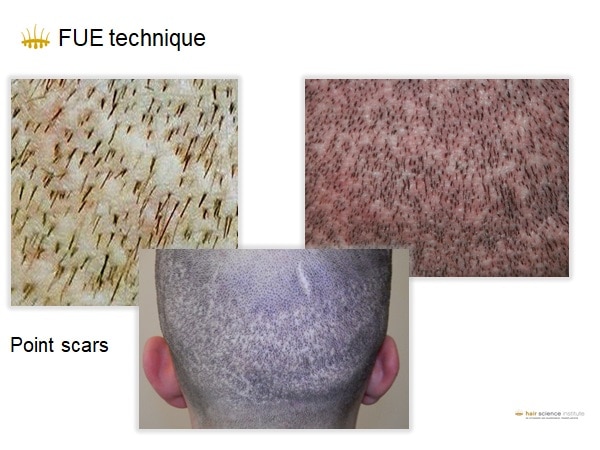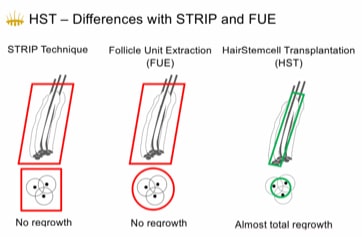Powered by Hair Science Institute
Partial cloning of follicular units with
(PL-FUT)
Hair Science Institute is an institution specialized in the field of hair and scalp diseases and operates according to the guidelines and protocols ISO 9001: 2008. The institute, with European offices in Amsterdam, Maastricht, London, Milan, Paris and Cap d’Antibes, is a research, development, treatment and training institute that develops new treatment methods in the field of hair restoration in association with Prof.dr. H. Martino Neumann, of the dermatology department of Erasmus Medical Center in Rotterdam, The Netherlands. Our institute was founded in 2005 and has performed more than 15,000 Hair Stem Cell transplant procedures.
The professor. Dr Phd Conradus Chosal Gho , the researcher father of the HST technique that he patented, is the author of studies (fundamental and clinical), in which he revealed that an entire follicle is not necessary to regenerate hair growth. If a portion of the follicular unit remains in the donor area, it can regenerate new hair, even when part of it is removed. That portion of the follicle that has been removed will in turn produce hair once it is transplanted into the recipient area. It is thus evident that one follicular unit is capable of producing more hair as described and published in the British Journal of Dermatology. If a portion of the follicular unit remains in the donor area, it can regenerate a new hair, even when a part of it is removed. That portion of the follicle unit which has been removed will in turn produce hair when transplanted into the recipient area. It is thus clear that a follicular unit is capable of producing more hair, as has been described and published in the British Journal of Dermatology.

scar from FUT surgery


directly after HST surgery
How HST differs from FUE and FUT
Absence of scars
Regenerated donor area: solved the case of insufficient donor areas
The donor area, regenerated following the regrowth of the partially removed follicular unit and without visible residual scars, can be reused again, a few months after the operation, as if it were the first time. For burn victims, as for all people with a limited donor area, this is very important if they wish to have their hair restored. The international journal BURNS (burns) has published an article dedicated to this reconstructive technique on burn patients.
Short and painless post-operative course
At the time of transplantation, holes are made in the recipient area with a smaller needle (0.5mm) than the one used for the extraction of the grafts. Because of this, the grafts fit snugly into the holes and over 95% of implanted grafts will regenerate new hair. Furthermore, no scars will form in the recipient area. Further advantages deriving from this HST technique are constituted by a much lighter and faster post-operative course and by the realization of a greater hair density because the grafts can thus be positioned much closer to each other taking into account their extremely small size. Anesthesia, practiced with tools specially developed and studied with the aim of providing the greatest comfort to the patient, is practically painless. Taking into account the minimal wounds generated on the scalp, of the order of half a millimeter, even after the treatment the patient does not feel any pain, unlike what happens in other techniques that both require bandages and a very long hospital stay with quite painful sutured scars .
Eyebrow and beard restoration
With HairStemcell Transplantation it is also possible to restore the eyebrows or beard. Several pictures of the donor area and the difference between FUE and HST can be found on the Hasci Italia website. Scientific articles have been and are published periodically in the most prestigious medical-oriented scientific journals.
For example “Progress in hair transplantation: transplantation of longitudinal partial follicular units” written by Coen G Gho, HA Martino Neumann PMID: 26370653 DOI: 10.1159 / 000369416 whose text translated here from English says that among the hair transplant techniques most common and known are the FUE and FUT or strip method in which a strip of skin containing follicular units is removed, cut into grafts and implanted in the recipient area. While with the follicular unit extraction (FUE) method, the entire follicular units are extracted one after the other and re-implanted one by one in the recipient area.
The FUE method leaves only tiny scars compared to the strip method, which leaves visible linear scars in the donor area. However, both methods have the main disadvantage that the extracted follicular units are removed entirely.The capital of follicular units a patient has is in any case limited and the fact of taking whole follicular units results in a decrease in hair density, since no regrowth will occur in the donor area. Since PL-FUT transplant extracts partial longitudinal follicular units which are used as complete follicular units to regenerate hair growth while the partial follicular units which remain in the dermis in the donor area survive and produce hair, PL-FUT allows us to multiply follicular units in vivo while preserving the donor area. Although this technique is absolutely suitable for androgenetic alopecia.
